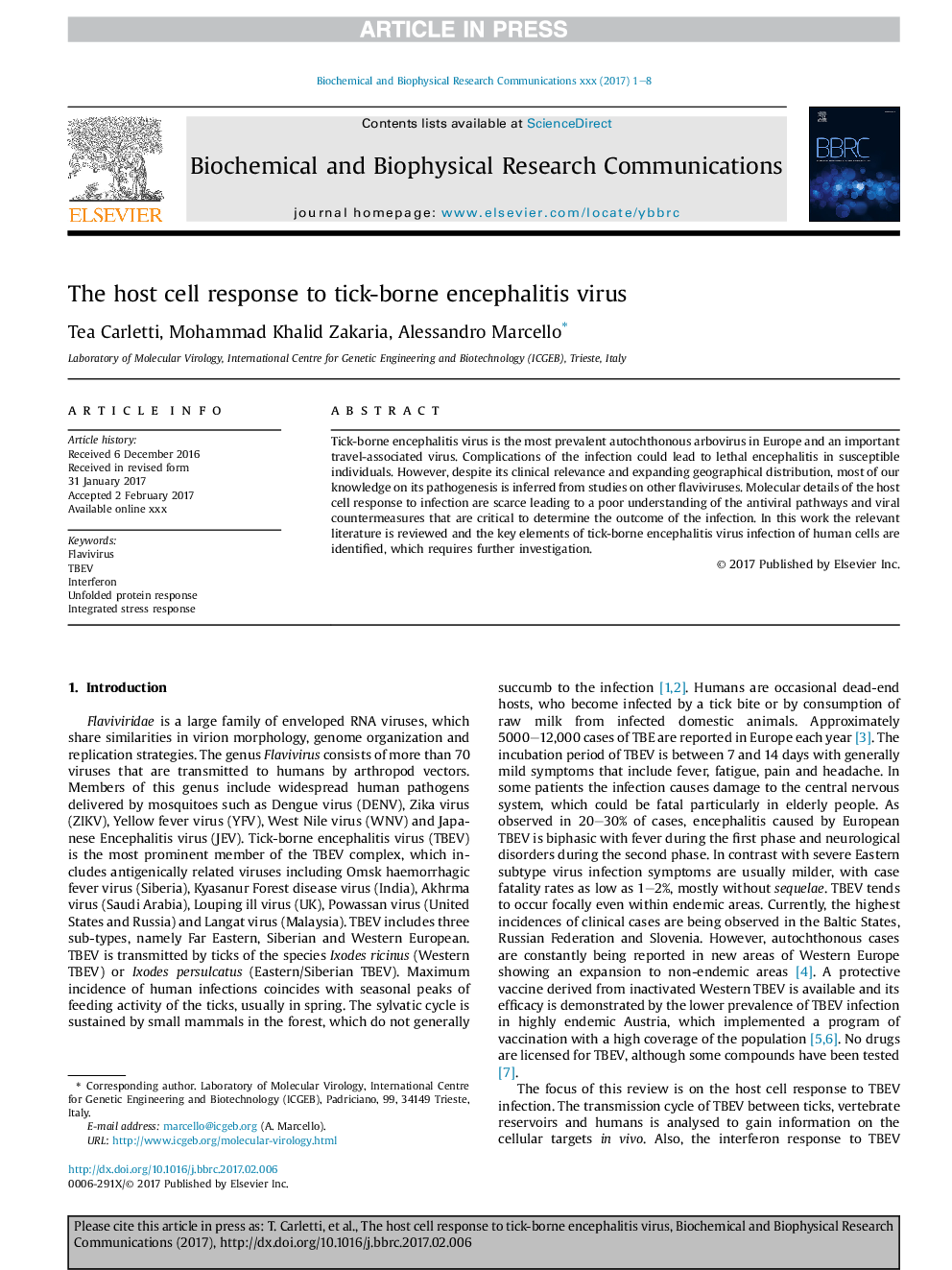| Article ID | Journal | Published Year | Pages | File Type |
|---|---|---|---|---|
| 5504699 | Biochemical and Biophysical Research Communications | 2017 | 8 Pages |
Abstract
Tick-borne encephalitis virus is the most prevalent autochthonous arbovirus in Europe and an important travel-associated virus. Complications of the infection could lead to lethal encephalitis in susceptible individuals. However, despite its clinical relevance and expanding geographical distribution, most of our knowledge on its pathogenesis is inferred from studies on other flaviviruses. Molecular details of the host cell response to infection are scarce leading to a poor understanding of the antiviral pathways and viral countermeasures that are critical to determine the outcome of the infection. In this work the relevant literature is reviewed and the key elements of tick-borne encephalitis virus infection of human cells are identified, which requires further investigation.
Related Topics
Life Sciences
Biochemistry, Genetics and Molecular Biology
Biochemistry
Authors
Tea Carletti, Mohammad Khalid Zakaria, Alessandro Marcello,
